Posted on November 28, 2022
By LabLynx
Journal articles
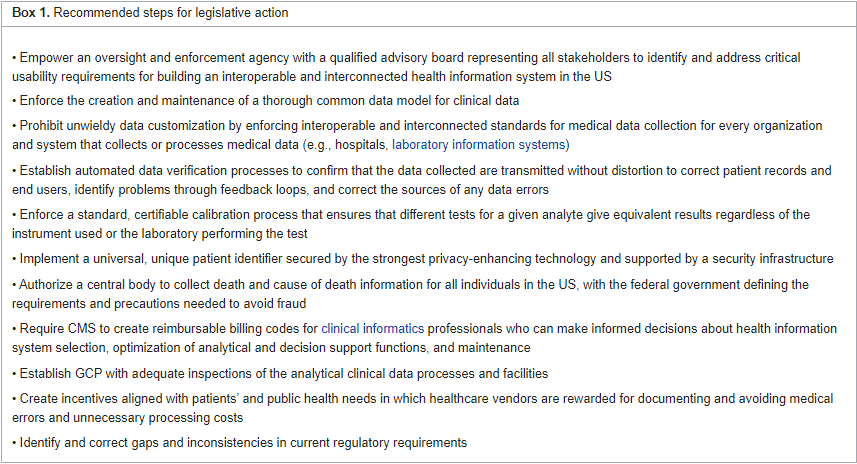
Interoperable health information systems in the United States has been a long-road effort that, according to Szarfman
et al., has a long way to go yet to reach its full potential. Noting the strain on the digital health systems of hospitals, physician offices, laboratories, and other entities during the COVID-19 pandemic, the authors—many of them from the U.S. FDA—"recommend the implementation of standardized data collection and transmission systems, universal identifiers for individual patients and end users, a reference standard infrastructure to support calibration and integration of laboratory results from equivalent tests, and modernized working practices" in this brief paper. After providing a contextual introduction, they discuss the lack of universal and harmonized data collection and transmission standards and highlight five major issues with modern health systems that need immediate action. After briefly discussing return on investment in adopting the authors' recommendations, they conclude by posting 11 recommendations for U.S. legislators and nine recommendations for public-private partnerships in addressing the issues of health systems interoperability in the United States. They close by noting that while "this problem will not be cheap to fix ... it will be much costlier to ignore."
Posted on November 22, 2022
By LabLynx
Journal articles
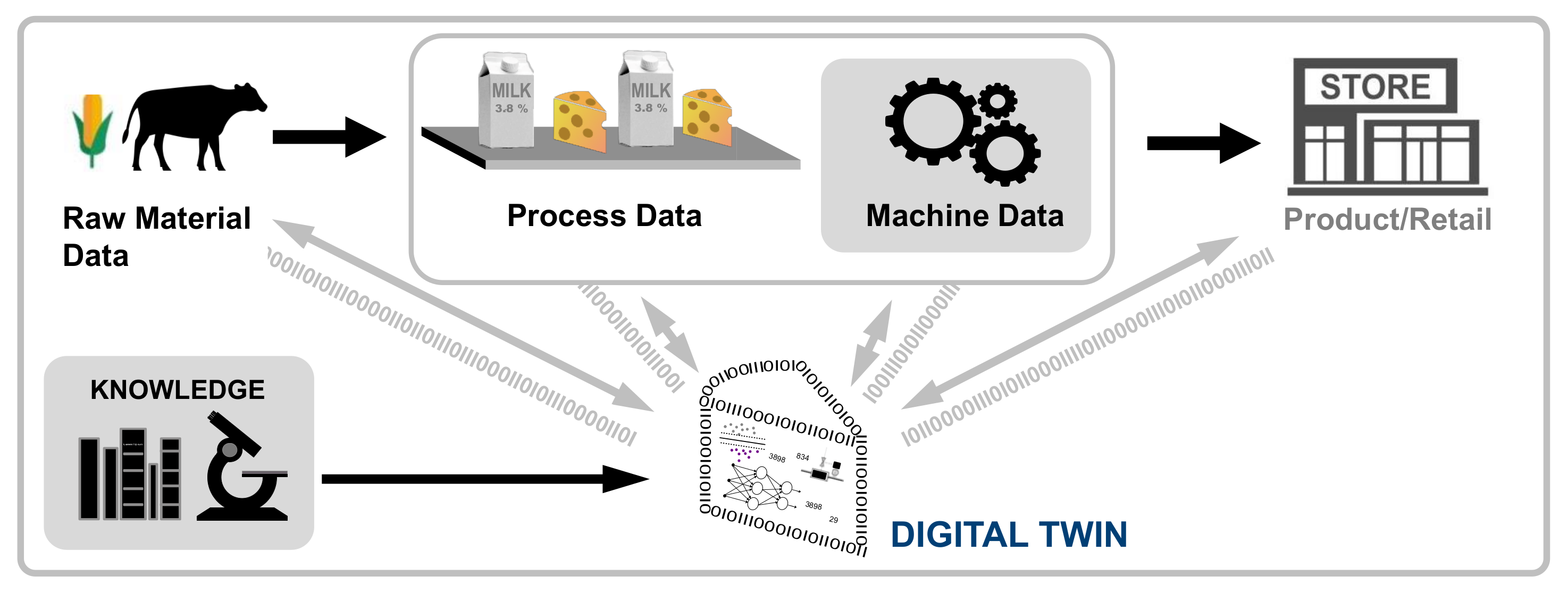
In this 2022 paper published in
Sensors, Henrichs
et al. of the University of Hohenheim present their literature review on the topic of digital twins in the food and beverage industry. The concept of the digital twin—a digital representation of a product, process, or system that as closely as possible represents the characteristics of the physical representation—is relatively new, and its use in the food and beverage industry holds much promise, according to the authors' research. After an introduction and extensive background, the authors provide the methodology for their review, focusing on six critical questions. They then present their results from a broad perspective, and then a more in-depth discussion focusing on answering those six questions. They close by emphasizing related work in the field, and then concluding that while a majority of the research conducted by others involves the production and processing stages of food and beverage activities, a dearth of cases appear to discuss supply, processing, retail, and consumption. They also note that "relatively few focus on the integration of digital twins in systems for developing autonomous control or providing recommendations to humans," which could be practically useful in the industry. "Nevertheless, digital twins provide huge potentials," they add, "e.g., in determining food quality, ensuring traceability, or designing personalized foods."
Posted on November 14, 2022
By LabLynx
Journal articles

In this 2022 journal article published in
Advances in Sample Preparation, Capetti
et al. of Università di Torino investigate the advantages and disadvantages that vacuum-assisted headspace solid-phase microextraction (Vac-HSSPME) may lend to the process of
Cannabis inflorescence preparation and subsequent testing, by gas chromatography–mass spectrometry (GC-MS), in order to accurately characterize both terpenoid and cannabinoid profiles. After providing an introduction on the topic, the authors describe the materials and methods used, as well as the results of their study. They conclude that "compared to standard HSSPME, vacuum conditions in the headspace ensure the fast recovery of cannabinoid markers at considerably lower sampling temperature (i.e., 90°C) that do not discriminate the most volatile fraction nor cause the formation of artifacts when the sampling time is minimized." They add that, in combination with GC-MS, Vac-HSSPME can prove to be "fast, totally automatable, and solvent-free," representing a more green analytical approach to
Cannabis inflorescence testing.
Posted on November 7, 2022
By LabLynx
Journal articles
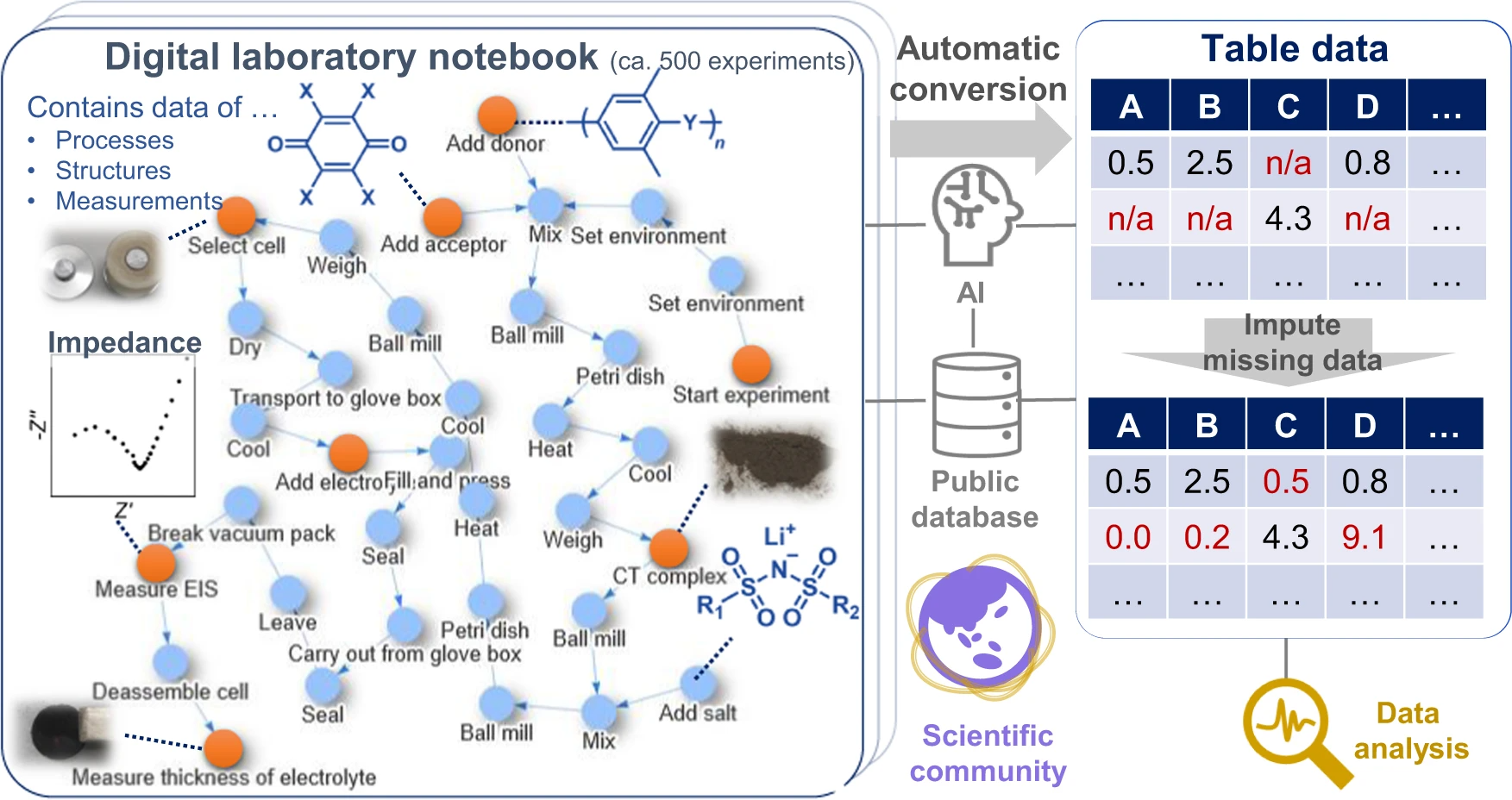
Like many other scientific disciplines, materials science is seeing many advances thanks to advanced computer systems that records large volumes of data and analyze it with speed. However, this data capture, analysis, and sharing has its challenges in material science, requiring more sophisticated systems. Hatakeyama-Sato
et al. highlight this fact with their materials informatics software platform that "losslessly describes the relationships of structures, properties, and processes as graphs in electronic laboratory notebooks (ELNs)." After describing the impetus for developing the platform, the authors explain its use within the context of materials informatics using a specific use case involving hundreds of experiments related to organic superionic glassy conductors. The authors include the methodology for those experiments and a wealth of supplementary information, while concluding their platform enables direct data sharing of material research, which "will improve scientific communication and accelerate integration of material knowledge."
Posted on October 31, 2022
By LabLynx
Journal articles
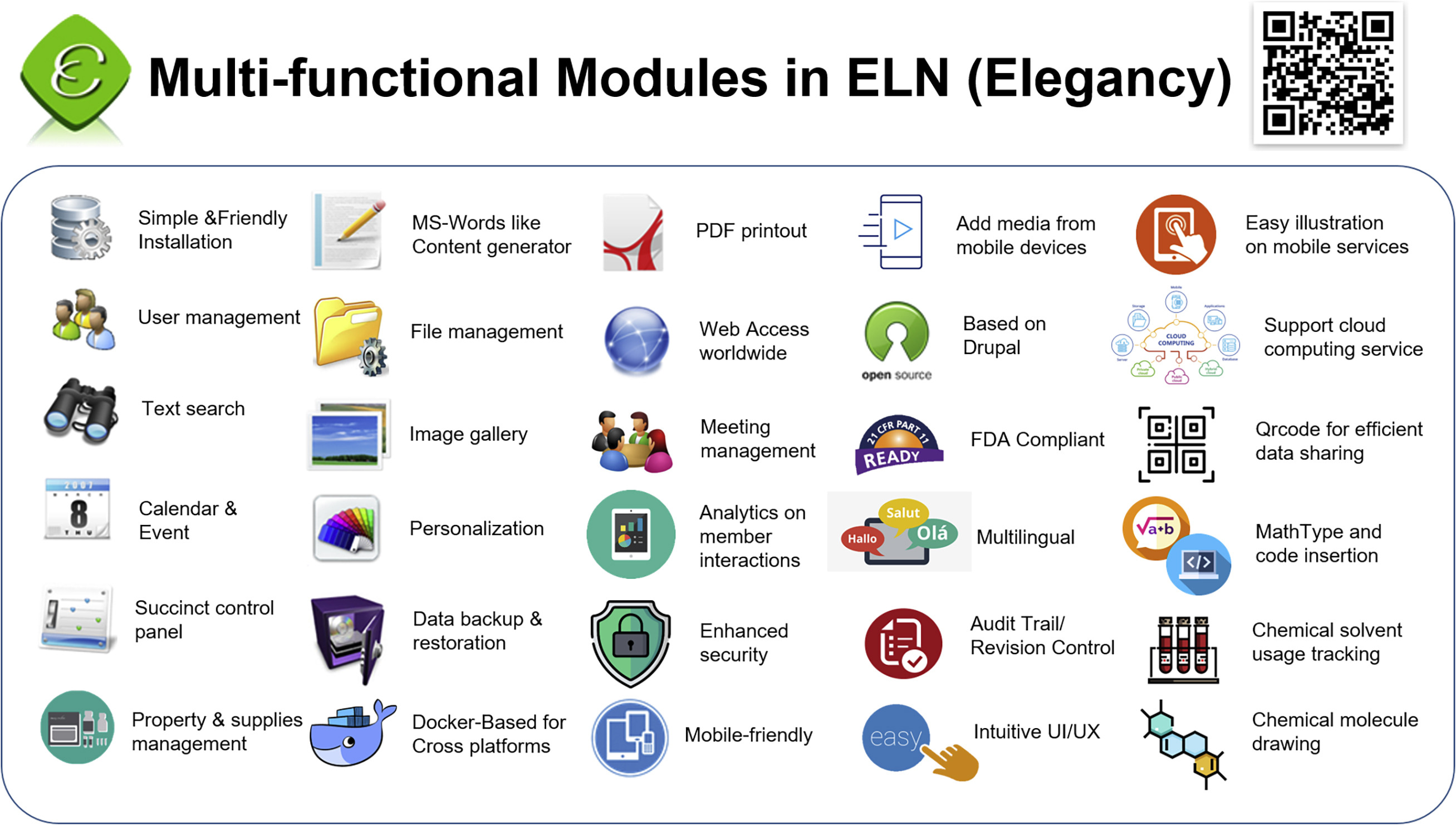
In this 2022 article published in the journal
iScience, Huang
et al. present their custom-made open-source electronic laboratory notebook (ELN) Elegancy. Citing insufficient functionality and ease of installation in free commercial and open-source options, the authors developed Elegancy, in part, using Drupal, PHP, and Docker, adding ELN features useful to most any lab, but also some features specifically useful to biomedical research labs. They describe the software's advantages and compare it to other similar options, highlighting Elegancy's easy no-code installation, data security, and biomedical and chemistry features. The authors close with discussion of its strengths and limitations, as well as related development details and software availability. The conclude that "Elegancy could help the scientific research community gather evidence, share information, reorganize knowledge, and digitize laboratory works with greater ease and security."
Posted on October 24, 2022
By LabLynx
Journal articles
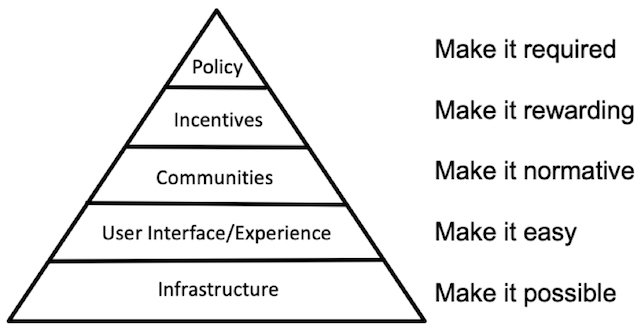
In this short article published in the
Journal of the Medical Library Association, Foster, Whipple, and Rios describe their experiences and learnings from implementing an electronic laboratory notebook (ELN) at the Indiana University School of Medicine (IUSM). Known as the largest medical school in the US, IUSM has seen adoption of its chosen LabArchives ELN solution grow since early implementation in September 2018. After providing extensive background on the nature of ELNs and what they represent, the authors present their use case at IUSM and discuss the results, as well as the limitations inherent to their findings, within the scope of supporting ELN implementation through its libraries. They conclude that their work with ELNs "demonstrates the integral role libraries can have in supporting, growing, and shaping the information and data management priorities to move research reproducibility forward."
Posted on October 17, 2022
By LabLynx
Journal articles
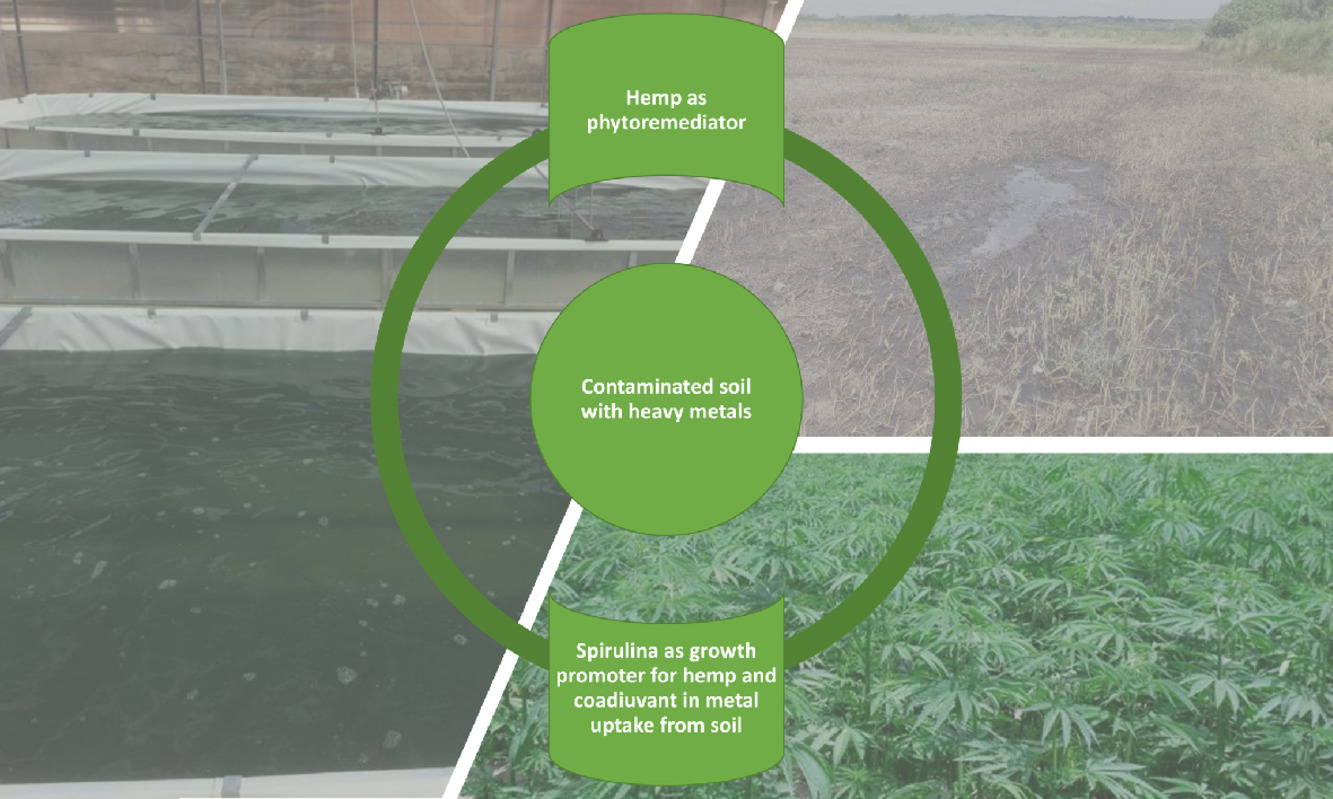
In this 2022 paper published in the journal
Environmental Advances, Musio
et al. explore the usefulness of
Cannabis sativa L. for the remediation of heavy metals from soils. While this concept is certainly not new, the authors also add the blue-green alga
Arthrospira platensis (spirulina) into the mix to see if further remediation gains can be made. Using nuclear magnetic resonance spectroscopy (NMR) and inductively coupled plasma atomic emission spectroscopy (ICP-AES) methods for analysis during the research, the authors come to several conclusions. First, they conclude that treatment of cannabis "with spirulina during the cultivation of the hemp induced an enhancement in the uptake of heavy metals." Second, they find that "NMR analysis allowed to identify the crucial variations of the metabolic composition that were induced by the treatment with spirulina," making it a useful analytical technique in this regard. By extension, they add, "the results described may encourage the application of spectroscopic methods for the rapid detection of structural changes in the various environmental spheres" and apply such remediation techniques in a monitored fashion.
Posted on October 10, 2022
By LabLynx
Journal articles
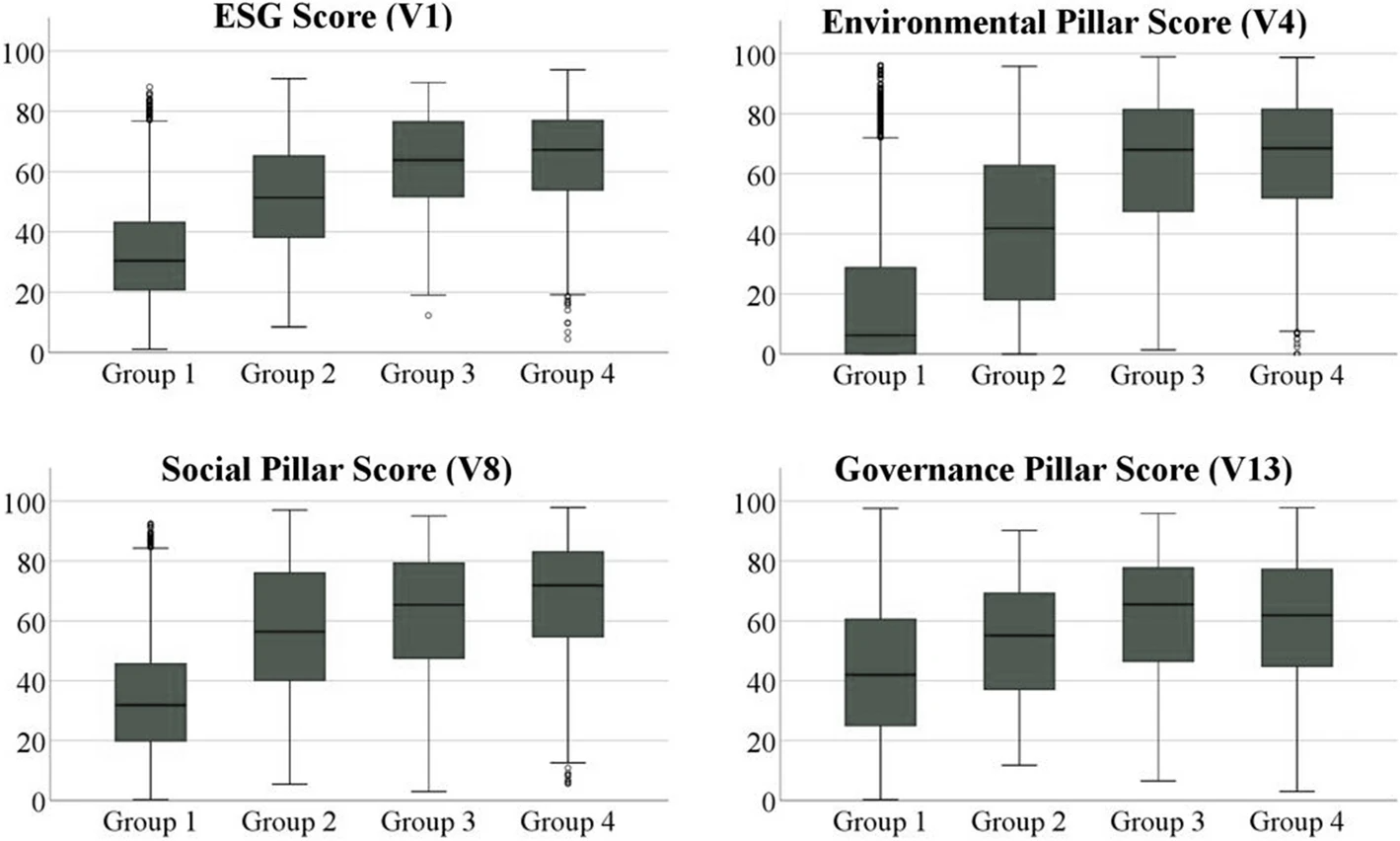
While this 2022 article published in
Environment, Development and Sustainability isn't directly about laboratories and informatics system, its discussion of quality management systems (QMSs) and environmental management systems (EMSs) remains highly relevant to the regulatory- and competition-driven laboratory of today. As Ronalter
et al. note, "growing societal and political focus on sustainability at the global level" places further pressure on businesses "to enhance their environmental, social, and governance (ESG) performance to satisfy respective stakeholder needs and ensure sustained business success"; laboratories and even laboratory software developers are not exempt from these pressures. The authors directly connect QMSs and EMSs to ESG performance in this paper, while highlighting "how combining these management systems can impact a corporation’s sustainable performance." Their study of ESG data is presented, and they conclude that adoption of such management systems "leads to positive developments" in workforce management, customer management, and supplier and stakeholder management, as well as in environmental efforts.
Posted on October 3, 2022
By LabLynx
Journal articles
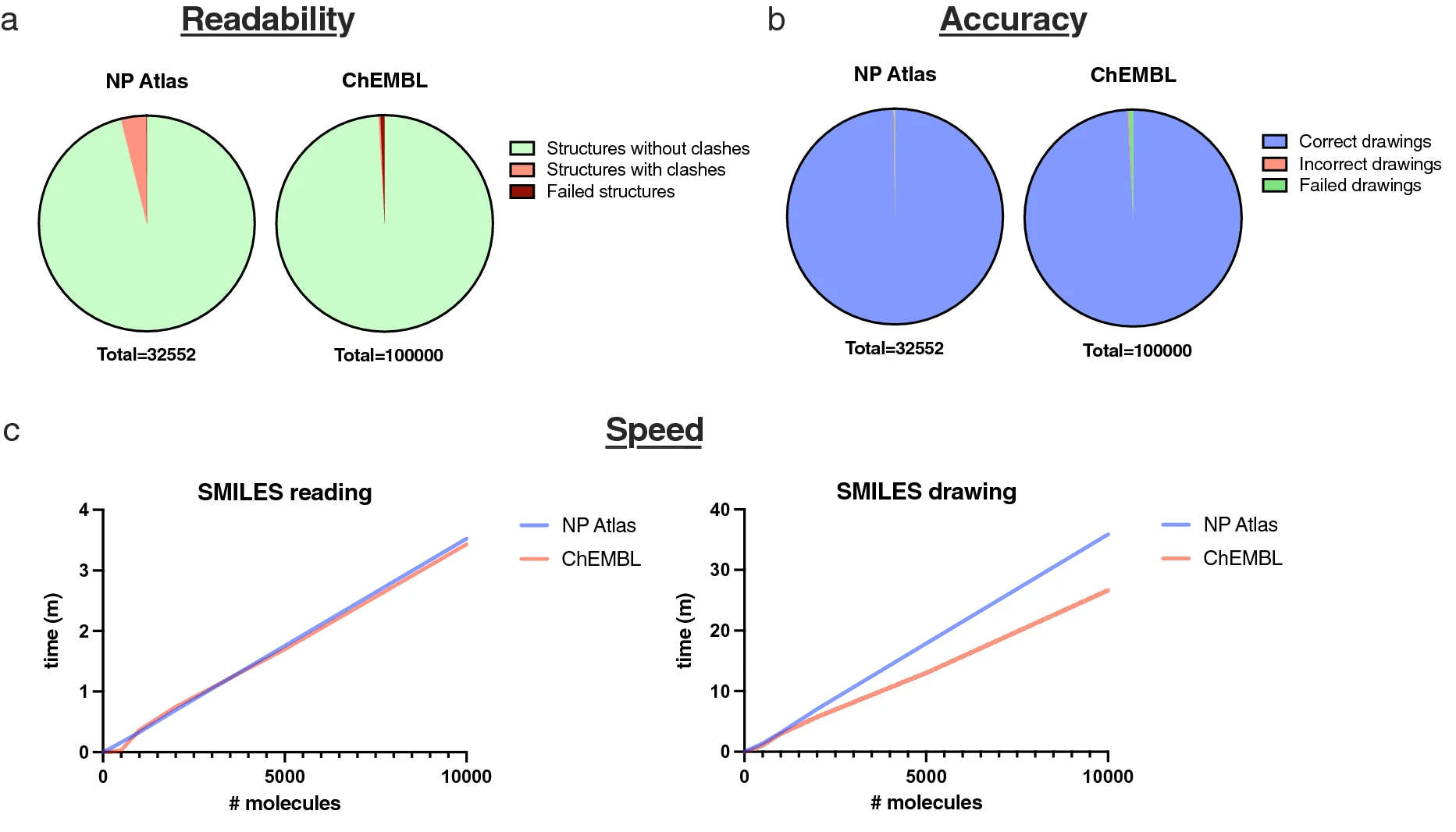
In this 2022 paper published in the
Journal of Cheminformatics, Terlouw
et al. of Wageningen University present details of their custom-developed Python-friendly cheminformatics solution that is largely free of major software dependencies. Noting a lack of such a system for chemical informatics Python developers, the authors developed this open-source solution and provide details about its development and use. After providing details about its practical use, they conclude that "while RDKit heavily outperforms PIKAChU in terms of speed, PIKAChU performs sufficiently fast and reliably to be suitable for cheminformatics and bioinformatics pipelines" and provides "a convenient alternative for chem- and bioinformaticians programming in Python."
Posted on September 26, 2022
By LabLynx
Journal articles
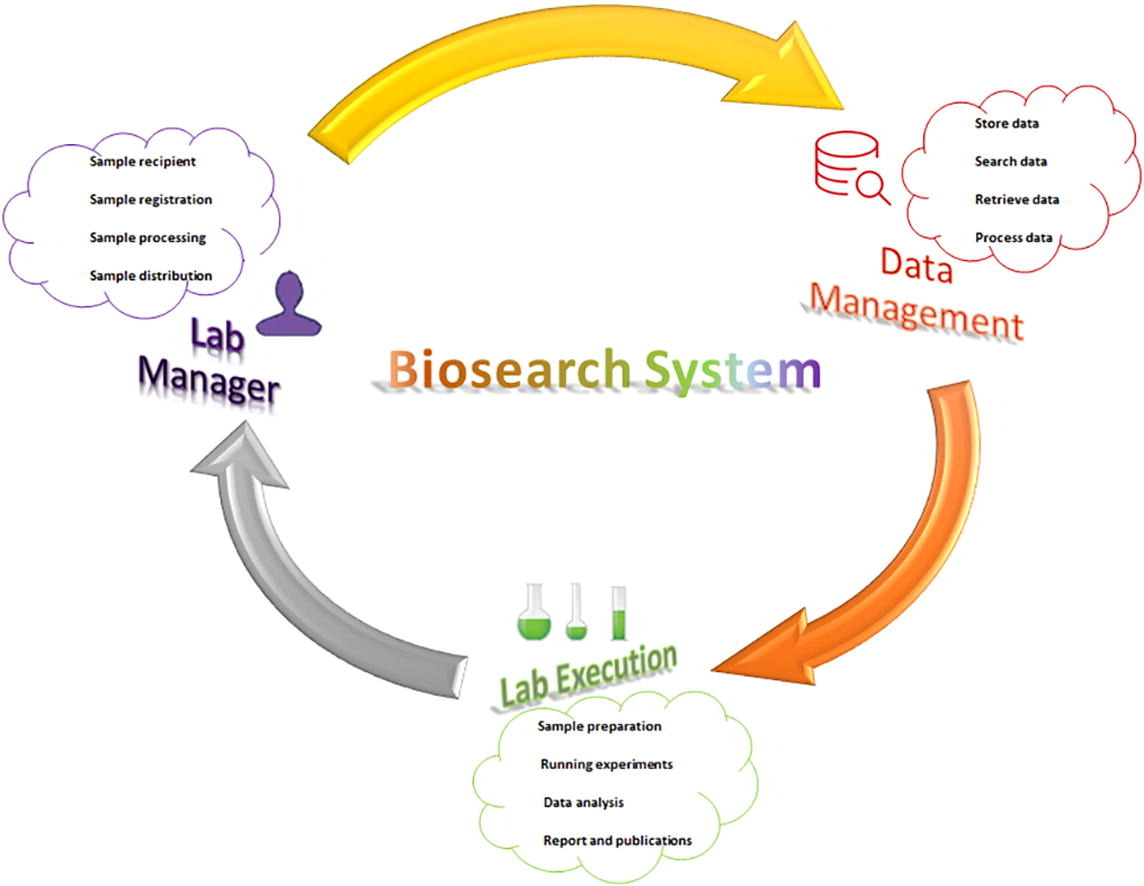
For some lab-based organizations, commercial software is financially out of their reach or unsuitable for their needs. These organizations often turn to developing their own system to meet their needs. Karim
et al. of King Abdulaziz and Temple University are no exception, in this 2022 paper explaining the development of their Biosearch System, a web-based laboratory information management system (LIMS) for biobanking and biomedical research. After a brief introduction, the authors provide details of their development philosophy and the software requirements for their LIMS. They then explain how the system functions, along with the results of a performance test using their own existing biobank data. After discussing the significance of their system, they conclude that "Biosearch System is a user-friendly LIMS solution for managing biobank specimens and their associated clinical information to facilitate genomic medicine research, leading to the discovery of disease biomarkers and therapeutic targets."
Posted on September 19, 2022
By LabLynx
Journal articles
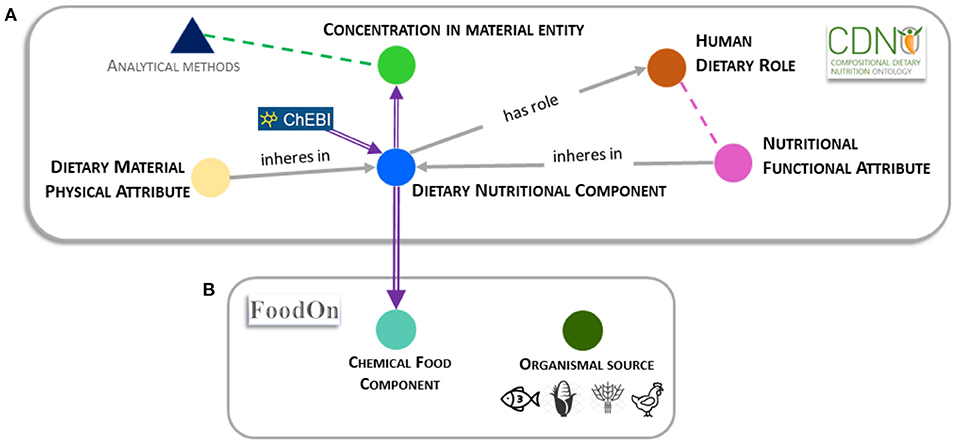
In this 2022 paper published in
Frontiers in Nutrition, Andrés-Hernández
et al. discuss the development, use, and expansion of the Compositional Dietary Nutrition Ontology (CDNO), a formal controlled vocabulary of terms, definitions, and relationships for better sharing food, beverage, and nutrition data and information. Noting a lack of such an ontology to facilitate "building common platforms that are of practical value to data curators and to end-users searching for relevant information," the authors briefly describe their methods and then discuss the use of the system for data curation and retrieval. They conclude that CDNO provides "a formal representation of commonly used dietary and nutritional terminology" that can "contribute toward data sharing and interoperability, particularly for initiatives where a wide range of foodstuffs are analyzed to diversify diet and agricultural production."
Posted on September 12, 2022
By LabLynx
Journal articles
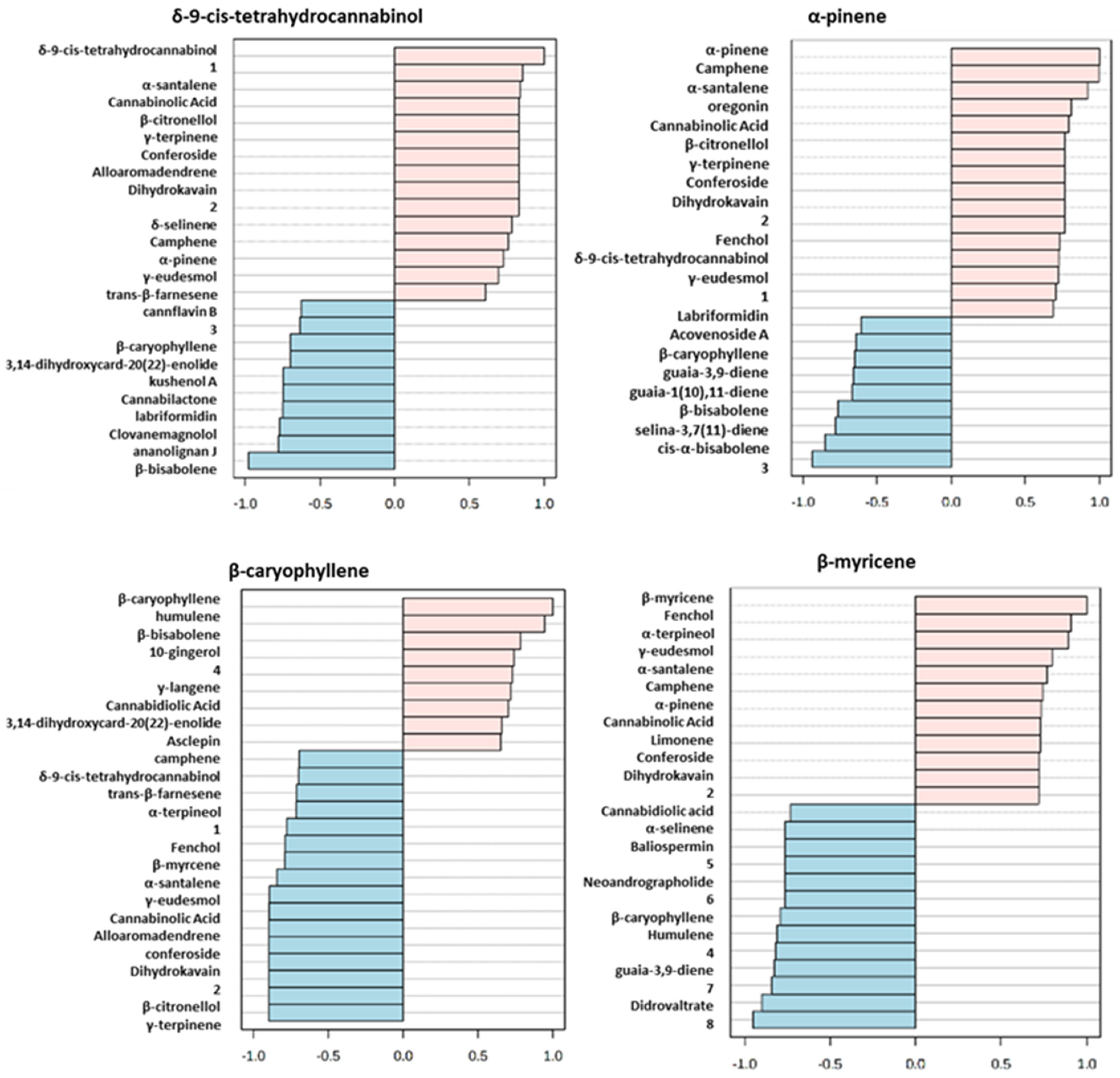
In this 2022 journal article published in
Separations, Cicaloni
et al. present their finding from applying advanced analysis techniques and statistical survey methods to five different
Cannabis sativa cultivars grown in Italy. After providing an introduction on the chemical characteristics of cannabis, the authors describe their materials and methods used, including solid-phase microextraction and ultra-performance liquid chromatography–mass spectrometry, as well as statistical methods such as partial least squares discriminant analysis (PLS-DA) and heat mapping with principal component analysis (PCA). After thoroughly presenting their results, the authors discuss their findings, concluding that given the vital importance of understanding the chemical composition of cannabis "for the development of new products for pharmaceutical, medical, and other uses," their results should "provide more information on
C. sativa inflorescences from five different cultivars, which may be useful for further investigations of metabolite applications in scientific research."
Posted on September 7, 2022
By LabLynx
Journal articles
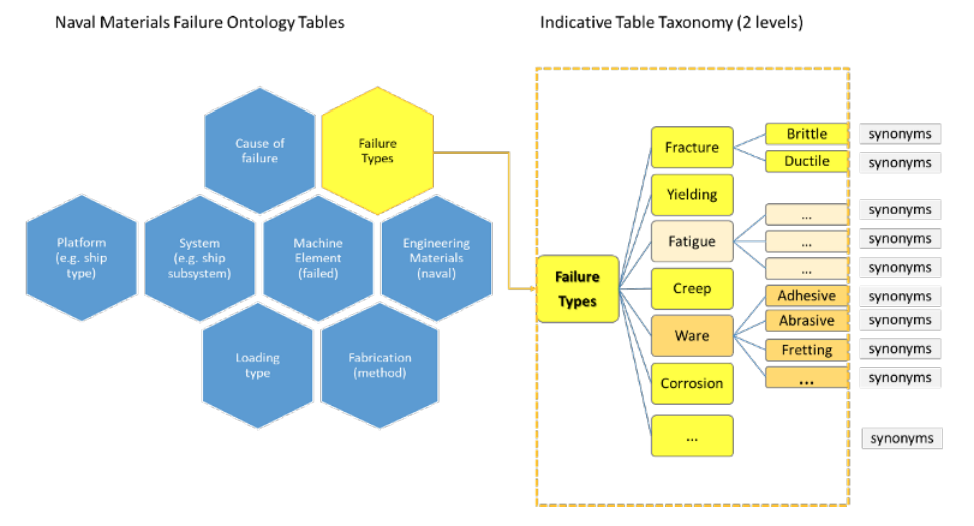
Melanitis
et al. present a materials informatics approach applied by the Hellenic Naval Academy in this 2021 paper published in
MATEC Web of Conferences. Their approach resulted in NAVMAT, developed "by integrating materials engineering and informatics under a platform of knowledge management." After providing some background on the topic of materials informatics and the management of research information associated with it, the authors describe their system architecture and key features, along with its potential applications. They conclude by providing six expected outcomes associated with the platform, adding that NAVMAT "aims to optimize naval materials failure analysis management and support decision making in maintenance and repair operations (MRO), materials supply management, and staff training."
Posted on August 31, 2022
By LabLynx
Journal articles
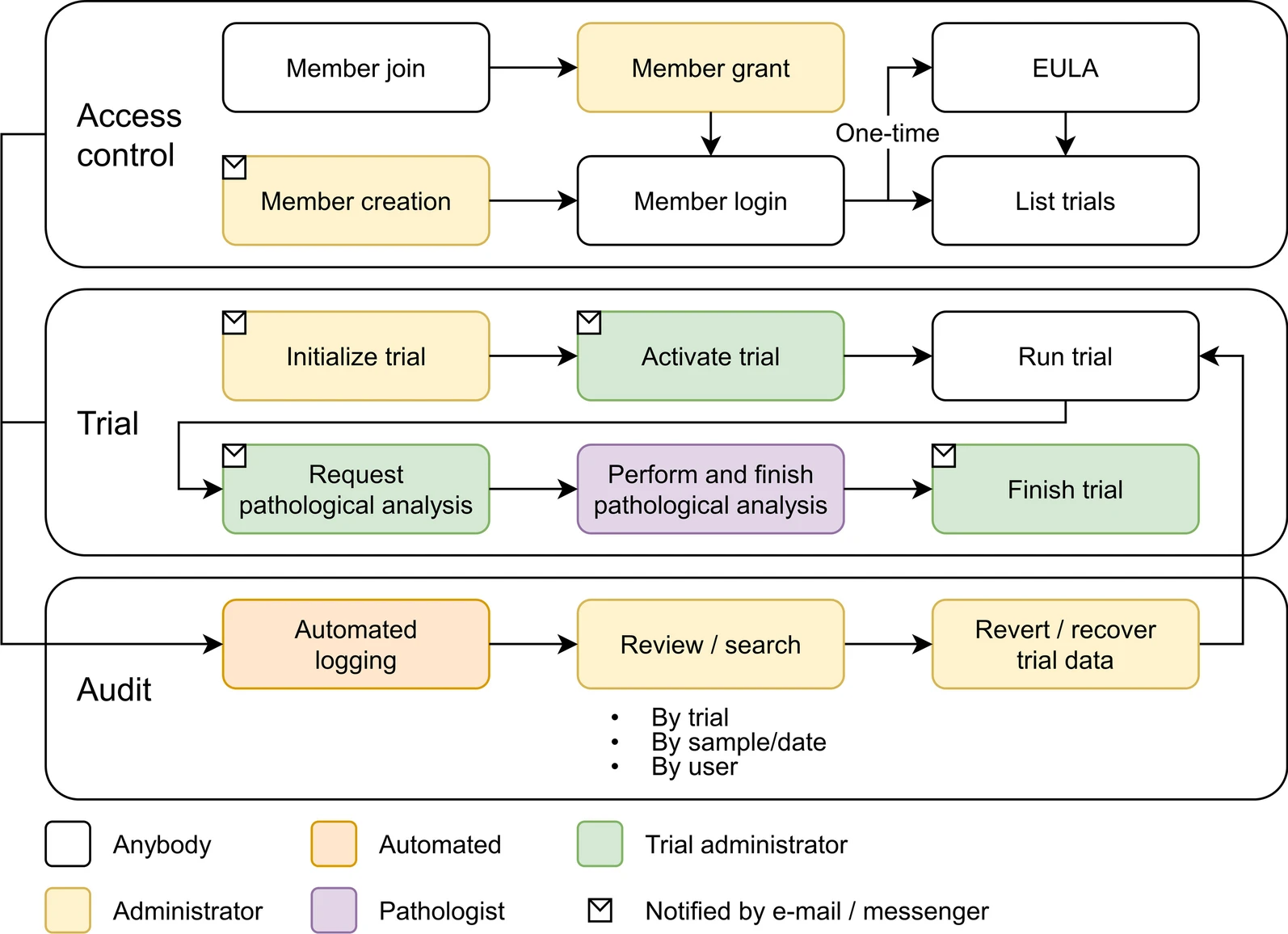
In this 2022 paper published in
Laboratory Animal Research, Yoon
et al., representing multiple healthcare entities in South Korea, present a study of their developed and implemented COVID-19 non-clinical trial LIMS. The LIMS, which was developed due to not finding systems "allowing multiple institutions to participate simultaneously in research related to COVID-19," was deployed at six animal Biosafety level 3 (BSL-3) institutions. After providing background on their impetus for developing the LIMS, the authors present the specifics of their solution and then discuss its applications at its participating BSL-3 institutions. They conclude that the system not only enables more "efficient and reliable documentation, management, and reporting of non-clinical COVID-19 test results," but it also "can be adapted to different research projects."
Posted on August 22, 2022
By LabLynx
Journal articles
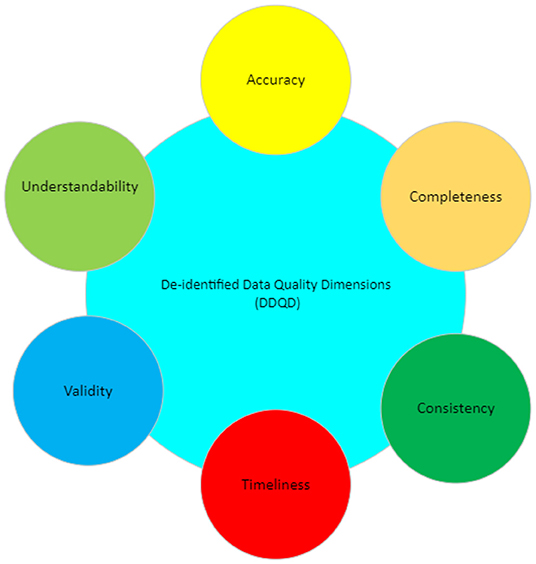
In this 2022 case study by AbuHalimeh, de-identified data quality dimensions (DDQD) in two real-life clinical systems are examined to better understand discrepancies and requirements for their correction in order to improve data quality for clinical researchers. After a brief introduction to the topic of clinical informatics and data quality, AbuHalimeh presents a case study using patient count data from a TranSMART Foundation i2b2 and Epic SlicerDicer system of "a healthcare organization that wanted to have the ability to ingest other sources of research-specific data." After discussing the methodology and results, the author proposes a series of eight steps to improve data quality generated from de-identified system." Those steps "together form guidelines for a methodology of manual and automated procedures and tools used to manage data quality and data governance in a multifaceted, diverse information environment such as healthcare organizations, as well as to enhance data quality among data housed in de-identified data systems," the author concludes.
Posted on August 16, 2022
By LabLynx
Journal articles
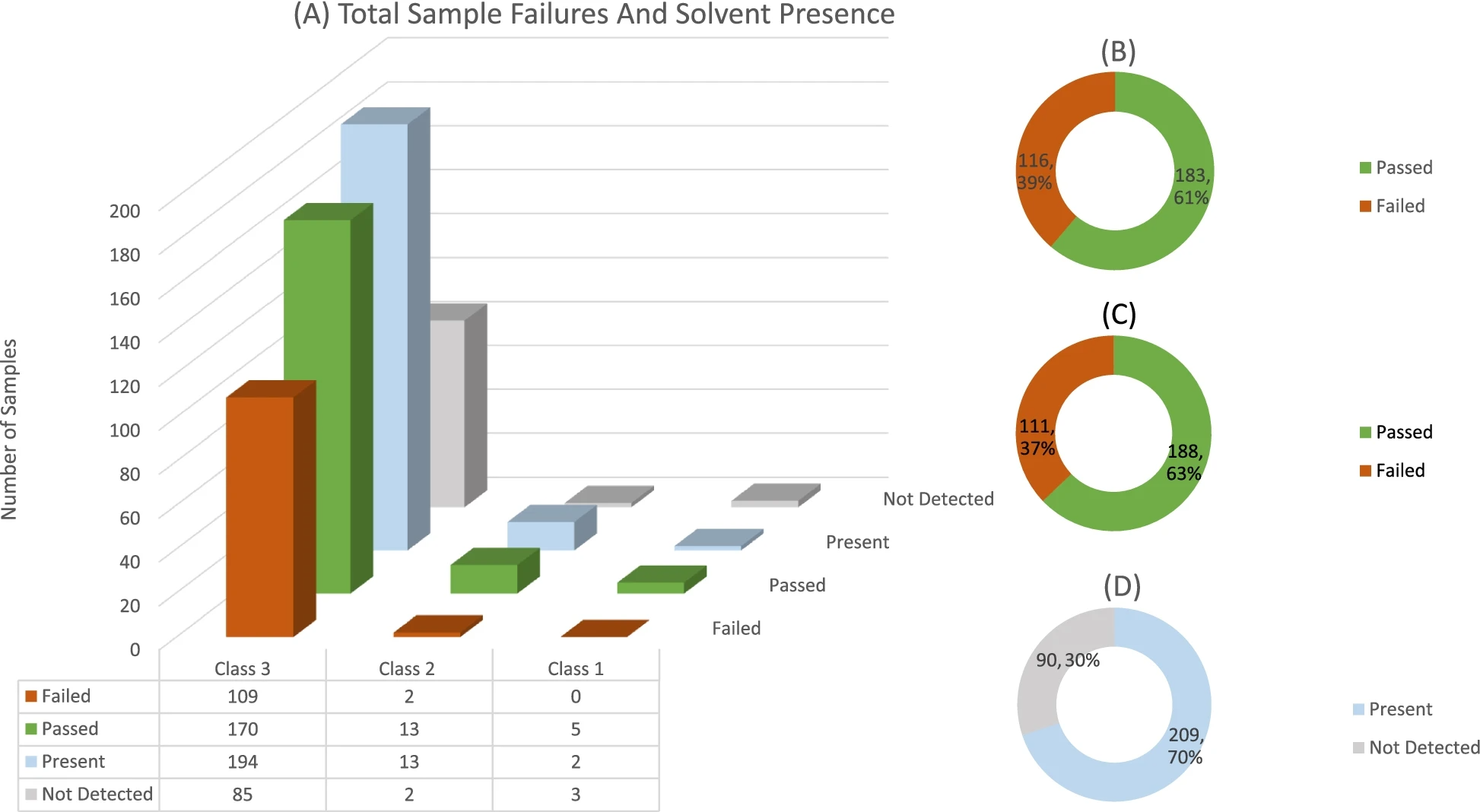
Following up on
2021 research on heavy metal contaminants in the South African cannabis market, Viviers
et al. similarly describe solvent residue contaminant found in the same market in this 2022 paper published in
Journal of Cannabis Research. Noting a dearth of such research in the South African market, the authors acquired 279 samples and had them analyzed in duplicate for a specific set of Class 1–3 solvents. The authors turned to headspace gas chromatography–mass spectrometry (HS-GC-MS) analysis , the United States Pharmacopeia (USP) <467>, and the International Council for Harmonisation of Technical Requirements for Pharmaceuticals for Human Use (ICH) Q3C to guide their analyses. After a brief discussion of materials and methods, the authors present their results and conclusions. They found among its analyzed 279 samples, "a total of 111 samples had at least one solvent analyte that failed the
USP and ICH specification limit (37% failure rate)," with the failure rate increasing 2% for summed solvent concentrations. They conclude that "when assessing solvent residues present in samples against a set of pharmacopeial safety limits, it is evident that a large fraction of cannabis-based products in South Africa exceeds these limits."
Posted on August 8, 2022
By LabLynx
Journal articles
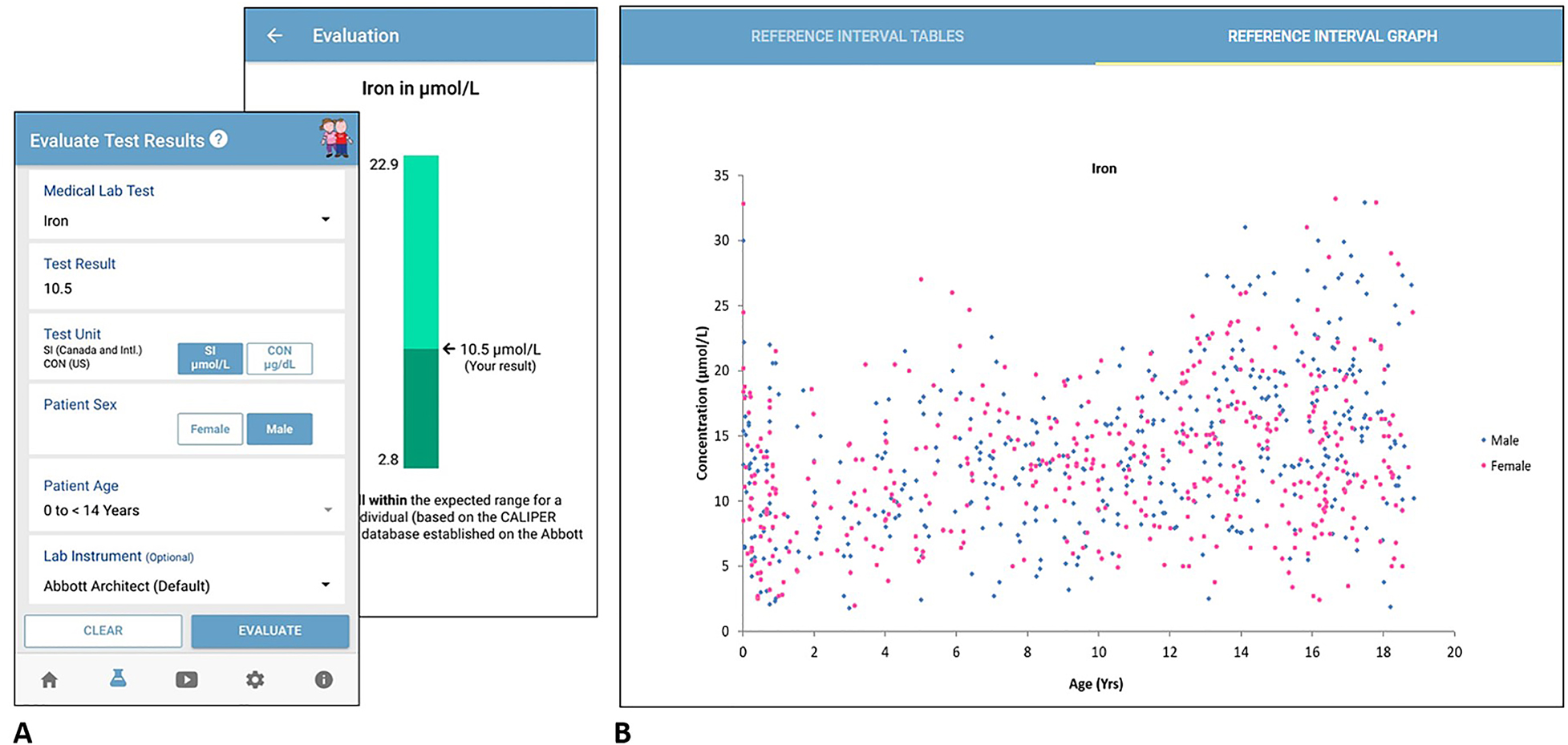
In this 2021 paper by Bohn
et al., a review of the utility and limitations of clinical laboratory electronic tools is given, along with a use case of the Canadian Laboratory Initiative on Pediatric Reference Intervals (CALIPER) online database. After a brief introduction, the authors examine both tools that are useful to the medical provider and tools useful to the patient, as well as a few caveats on their use. They then discuss CALIPER, a tool " aimed to improve blood test result interpretation in children by establishing accurate and robust pediatric reference intervals for important biomarkers of health and disease." They discuss the system in the framework of how such clinical electronic systems can assist doctors and patients through the laboratory. They conclude that "clinical laboratories should be leading and actively engaged in electronic diagnostic tool innovations that improve laboratory data communication and reduce post-analytical errors in test result reporting and interpretation," while at the same time considering "[i]nherent biases to data-driven technologies."
Posted on August 1, 2022
By LabLynx
Journal articles
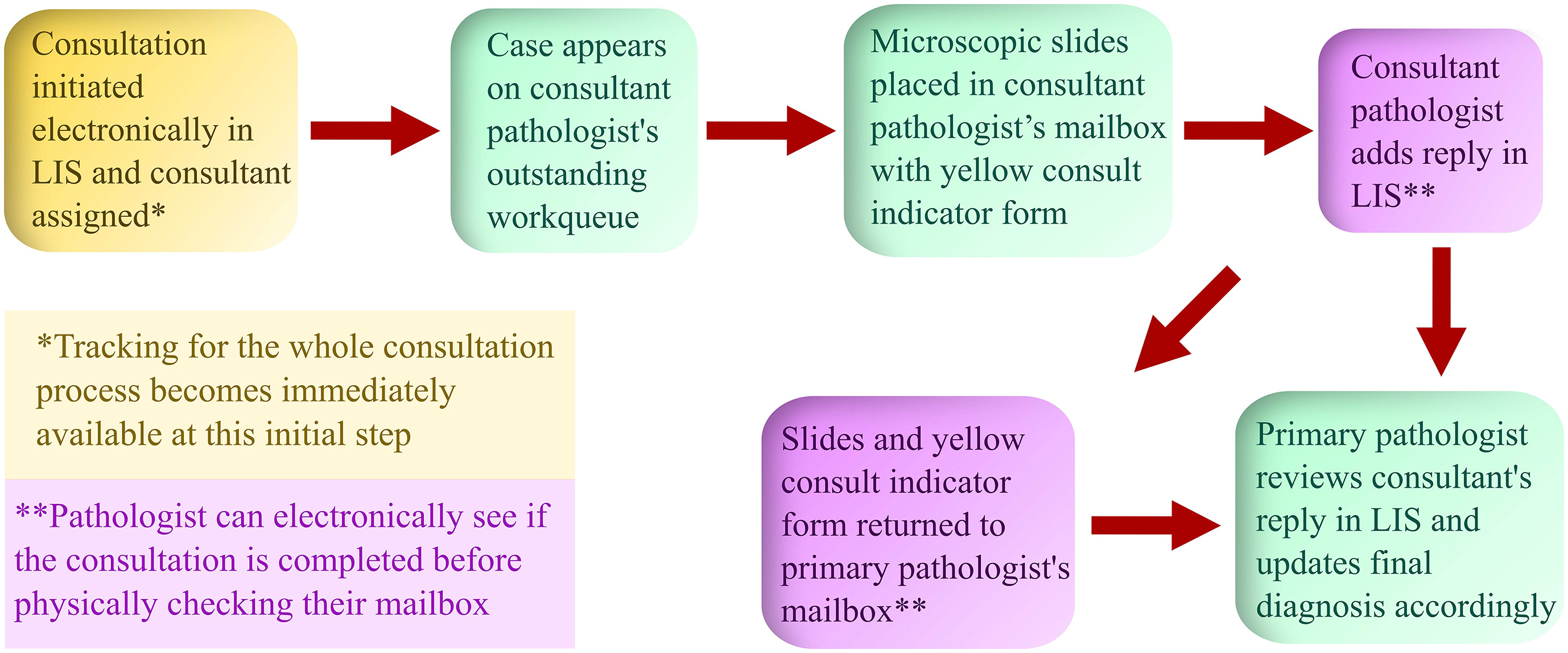
In this 2022 paper published in
Journal of Pathology Informatics, Dundar
et al. of University of Iowa Hospitals and Clinics describe an add-on for their laboratory information system (LIS), an electronic intradepartmental consultation system for anatomic pathology (AP), and how it impacted their facilities. After a brief introduction and background, the authors describe the methods used to adapt an AP consultation system into Epic's AP Beaker. Noting that 7.3% of all case work was consultation, they broke down the results of implementing the more automated system and discussed how the new system improved management and documentation of the consultation process. After discussion of their results, the authors conclude that their more automated system implemented in the AP Beaker LIS improves their processes and documentation, provides better tracking of consultation cases, which in turn plays "a vital role in preventing misdiagnosis and improving pathology reporting and trainee education."
Posted on July 26, 2022
By LabLynx
Journal articles
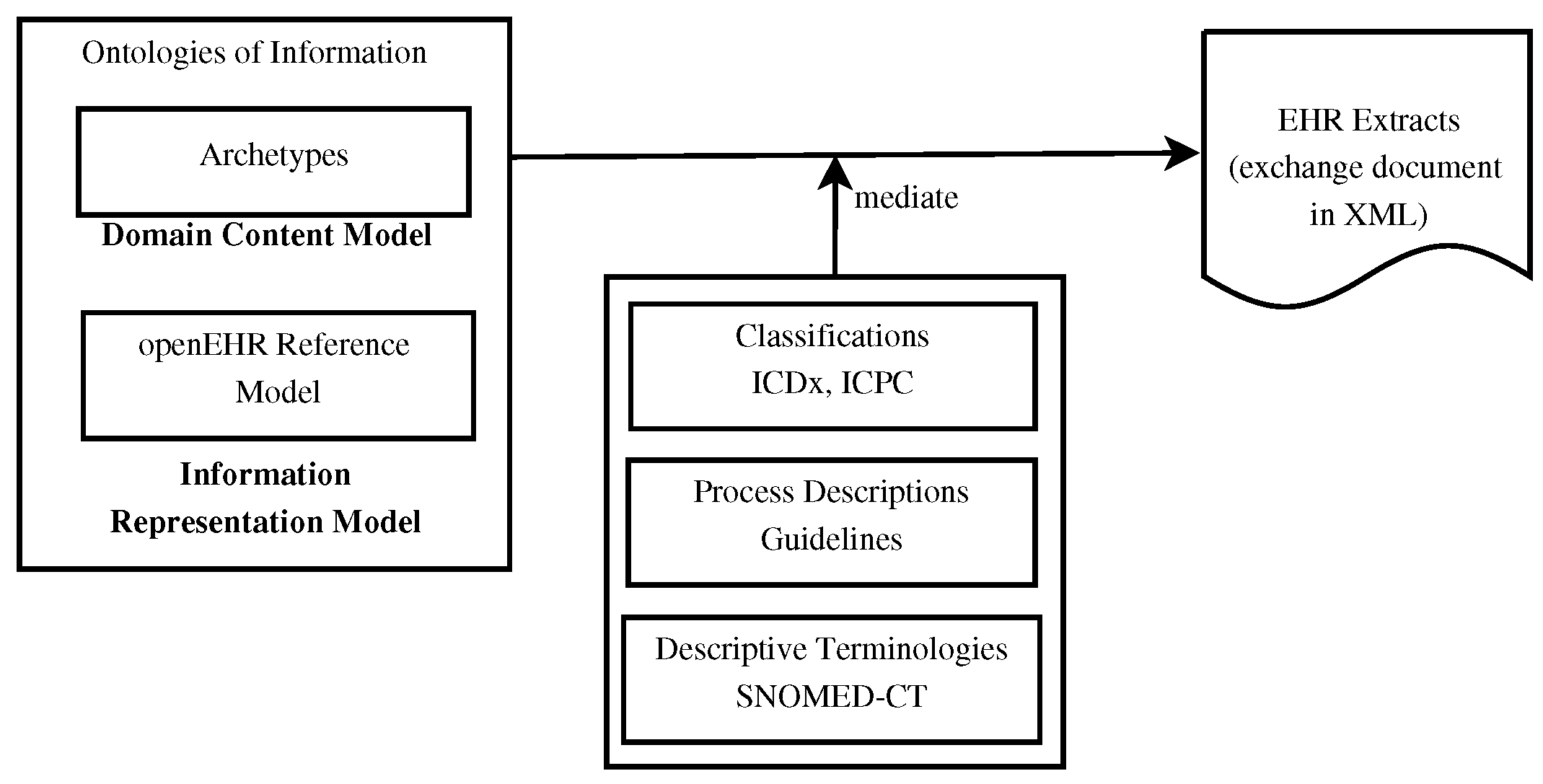
The interoperability of health care systems—especially electronic health records (EHRs)—has long been a focus of regulators, medical personnel, and other key stakeholders. Interoperability helps ensure data communicated from one system to another are sufficient for the receiving system to work with, i.e., have the same meaning to the recipient as they do the sender. This is not always an easy task, as noted by Sachdeva and Bhalla in this 2022 paper published in
Information. Also noting the value in clinical information exchange, the authors examine formal methods of making interoperability work better, as well as considerations interoperability experts should be making in successfully transforming data across different EHR standards. After laying out their research work and findings on cross-conversion of archetypes such as XML, ADL, and OWL, the authors conclude both that "terminology binding must established through archetypes" and "mappings between different standardized EHR systems must be established." Each archetype has its drawbacks and benefits, depending on what you're trying to accomplish, and this research "can contribute to helping EHR system vendors and developers to choose the appropriate technology for the required purpose, keeping in mind semantic interoperability."
Posted on July 18, 2022
By LabLynx
Journal articles
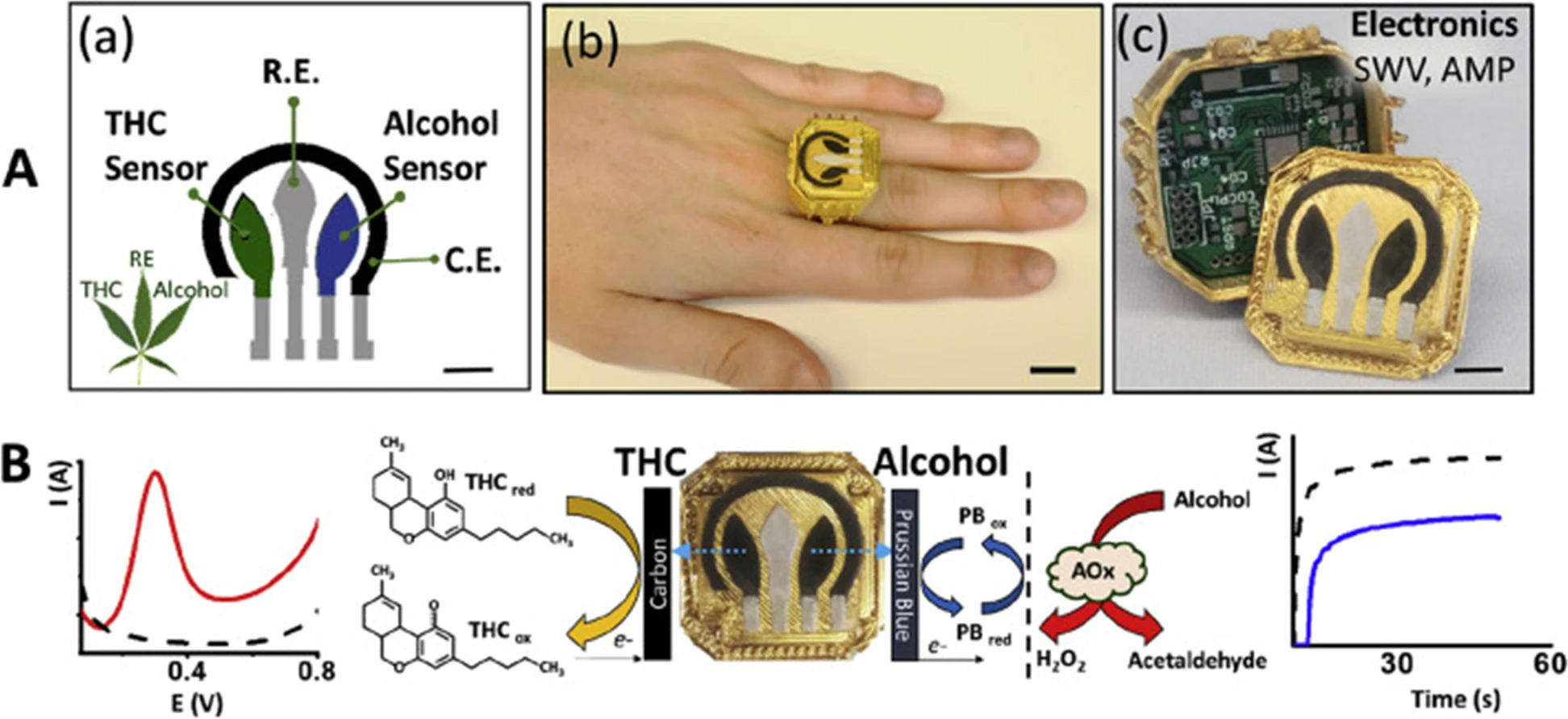
As the analytical landscape for laboratory measurement of cannabinoids in a variety of matrices continues to evolve and standardize, the demand for more rapid yet accurate point-of-testing solutions for cannabinoids continues to grow. This demand comes from not only the cannabis cultivator but also the law enforcement community. One potential path to meet demand is the electrochemical sensor, as suggested by Amini
et al. In this 2022 paper, the authors briefly describe the demand issue and how electrochemical sensors have been applied by other researchers. They then focus in on sensors for oral fluid specimens and how they have been successfully applied. The authors conclude that this technology has potential for "roadside drug testing, cannabis product quality control, and cannabis crop evaluation," but not without challenges to proper implementation, including "nonspecific interaction and the interference of compounds and species from the heavy plant matrix or oral fluids."
 Interoperable health information systems in the United States has been a long-road effort that, according to Szarfman et al., has a long way to go yet to reach its full potential. Noting the strain on the digital health systems of hospitals, physician offices, laboratories, and other entities during the COVID-19 pandemic, the authors—many of them from the U.S. FDA—"recommend the implementation of standardized data collection and transmission systems, universal identifiers for individual patients and end users, a reference standard infrastructure to support calibration and integration of laboratory results from equivalent tests, and modernized working practices" in this brief paper. After providing a contextual introduction, they discuss the lack of universal and harmonized data collection and transmission standards and highlight five major issues with modern health systems that need immediate action. After briefly discussing return on investment in adopting the authors' recommendations, they conclude by posting 11 recommendations for U.S. legislators and nine recommendations for public-private partnerships in addressing the issues of health systems interoperability in the United States. They close by noting that while "this problem will not be cheap to fix ... it will be much costlier to ignore."
Interoperable health information systems in the United States has been a long-road effort that, according to Szarfman et al., has a long way to go yet to reach its full potential. Noting the strain on the digital health systems of hospitals, physician offices, laboratories, and other entities during the COVID-19 pandemic, the authors—many of them from the U.S. FDA—"recommend the implementation of standardized data collection and transmission systems, universal identifiers for individual patients and end users, a reference standard infrastructure to support calibration and integration of laboratory results from equivalent tests, and modernized working practices" in this brief paper. After providing a contextual introduction, they discuss the lack of universal and harmonized data collection and transmission standards and highlight five major issues with modern health systems that need immediate action. After briefly discussing return on investment in adopting the authors' recommendations, they conclude by posting 11 recommendations for U.S. legislators and nine recommendations for public-private partnerships in addressing the issues of health systems interoperability in the United States. They close by noting that while "this problem will not be cheap to fix ... it will be much costlier to ignore."
 In this 2022 paper published in Sensors, Henrichs et al. of the University of Hohenheim present their literature review on the topic of digital twins in the food and beverage industry. The concept of the digital twin—a digital representation of a product, process, or system that as closely as possible represents the characteristics of the physical representation—is relatively new, and its use in the food and beverage industry holds much promise, according to the authors' research. After an introduction and extensive background, the authors provide the methodology for their review, focusing on six critical questions. They then present their results from a broad perspective, and then a more in-depth discussion focusing on answering those six questions. They close by emphasizing related work in the field, and then concluding that while a majority of the research conducted by others involves the production and processing stages of food and beverage activities, a dearth of cases appear to discuss supply, processing, retail, and consumption. They also note that "relatively few focus on the integration of digital twins in systems for developing autonomous control or providing recommendations to humans," which could be practically useful in the industry. "Nevertheless, digital twins provide huge potentials," they add, "e.g., in determining food quality, ensuring traceability, or designing personalized foods."
In this 2022 paper published in Sensors, Henrichs et al. of the University of Hohenheim present their literature review on the topic of digital twins in the food and beverage industry. The concept of the digital twin—a digital representation of a product, process, or system that as closely as possible represents the characteristics of the physical representation—is relatively new, and its use in the food and beverage industry holds much promise, according to the authors' research. After an introduction and extensive background, the authors provide the methodology for their review, focusing on six critical questions. They then present their results from a broad perspective, and then a more in-depth discussion focusing on answering those six questions. They close by emphasizing related work in the field, and then concluding that while a majority of the research conducted by others involves the production and processing stages of food and beverage activities, a dearth of cases appear to discuss supply, processing, retail, and consumption. They also note that "relatively few focus on the integration of digital twins in systems for developing autonomous control or providing recommendations to humans," which could be practically useful in the industry. "Nevertheless, digital twins provide huge potentials," they add, "e.g., in determining food quality, ensuring traceability, or designing personalized foods."
 In this 2022 journal article published in Advances in Sample Preparation, Capetti et al. of Università di Torino investigate the advantages and disadvantages that vacuum-assisted headspace solid-phase microextraction (Vac-HSSPME) may lend to the process of Cannabis inflorescence preparation and subsequent testing, by gas chromatography–mass spectrometry (GC-MS), in order to accurately characterize both terpenoid and cannabinoid profiles. After providing an introduction on the topic, the authors describe the materials and methods used, as well as the results of their study. They conclude that "compared to standard HSSPME, vacuum conditions in the headspace ensure the fast recovery of cannabinoid markers at considerably lower sampling temperature (i.e., 90°C) that do not discriminate the most volatile fraction nor cause the formation of artifacts when the sampling time is minimized." They add that, in combination with GC-MS, Vac-HSSPME can prove to be "fast, totally automatable, and solvent-free," representing a more green analytical approach to Cannabis inflorescence testing.
In this 2022 journal article published in Advances in Sample Preparation, Capetti et al. of Università di Torino investigate the advantages and disadvantages that vacuum-assisted headspace solid-phase microextraction (Vac-HSSPME) may lend to the process of Cannabis inflorescence preparation and subsequent testing, by gas chromatography–mass spectrometry (GC-MS), in order to accurately characterize both terpenoid and cannabinoid profiles. After providing an introduction on the topic, the authors describe the materials and methods used, as well as the results of their study. They conclude that "compared to standard HSSPME, vacuum conditions in the headspace ensure the fast recovery of cannabinoid markers at considerably lower sampling temperature (i.e., 90°C) that do not discriminate the most volatile fraction nor cause the formation of artifacts when the sampling time is minimized." They add that, in combination with GC-MS, Vac-HSSPME can prove to be "fast, totally automatable, and solvent-free," representing a more green analytical approach to Cannabis inflorescence testing.
 Like many other scientific disciplines, materials science is seeing many advances thanks to advanced computer systems that records large volumes of data and analyze it with speed. However, this data capture, analysis, and sharing has its challenges in material science, requiring more sophisticated systems. Hatakeyama-Sato et al. highlight this fact with their materials informatics software platform that "losslessly describes the relationships of structures, properties, and processes as graphs in electronic laboratory notebooks (ELNs)." After describing the impetus for developing the platform, the authors explain its use within the context of materials informatics using a specific use case involving hundreds of experiments related to organic superionic glassy conductors. The authors include the methodology for those experiments and a wealth of supplementary information, while concluding their platform enables direct data sharing of material research, which "will improve scientific communication and accelerate integration of material knowledge."
Like many other scientific disciplines, materials science is seeing many advances thanks to advanced computer systems that records large volumes of data and analyze it with speed. However, this data capture, analysis, and sharing has its challenges in material science, requiring more sophisticated systems. Hatakeyama-Sato et al. highlight this fact with their materials informatics software platform that "losslessly describes the relationships of structures, properties, and processes as graphs in electronic laboratory notebooks (ELNs)." After describing the impetus for developing the platform, the authors explain its use within the context of materials informatics using a specific use case involving hundreds of experiments related to organic superionic glassy conductors. The authors include the methodology for those experiments and a wealth of supplementary information, while concluding their platform enables direct data sharing of material research, which "will improve scientific communication and accelerate integration of material knowledge."
 In this 2022 article published in the journal iScience, Huang et al. present their custom-made open-source electronic laboratory notebook (ELN) Elegancy. Citing insufficient functionality and ease of installation in free commercial and open-source options, the authors developed Elegancy, in part, using Drupal, PHP, and Docker, adding ELN features useful to most any lab, but also some features specifically useful to biomedical research labs. They describe the software's advantages and compare it to other similar options, highlighting Elegancy's easy no-code installation, data security, and biomedical and chemistry features. The authors close with discussion of its strengths and limitations, as well as related development details and software availability. The conclude that "Elegancy could help the scientific research community gather evidence, share information, reorganize knowledge, and digitize laboratory works with greater ease and security."
In this 2022 article published in the journal iScience, Huang et al. present their custom-made open-source electronic laboratory notebook (ELN) Elegancy. Citing insufficient functionality and ease of installation in free commercial and open-source options, the authors developed Elegancy, in part, using Drupal, PHP, and Docker, adding ELN features useful to most any lab, but also some features specifically useful to biomedical research labs. They describe the software's advantages and compare it to other similar options, highlighting Elegancy's easy no-code installation, data security, and biomedical and chemistry features. The authors close with discussion of its strengths and limitations, as well as related development details and software availability. The conclude that "Elegancy could help the scientific research community gather evidence, share information, reorganize knowledge, and digitize laboratory works with greater ease and security."
 In this short article published in the Journal of the Medical Library Association, Foster, Whipple, and Rios describe their experiences and learnings from implementing an electronic laboratory notebook (ELN) at the Indiana University School of Medicine (IUSM). Known as the largest medical school in the US, IUSM has seen adoption of its chosen LabArchives ELN solution grow since early implementation in September 2018. After providing extensive background on the nature of ELNs and what they represent, the authors present their use case at IUSM and discuss the results, as well as the limitations inherent to their findings, within the scope of supporting ELN implementation through its libraries. They conclude that their work with ELNs "demonstrates the integral role libraries can have in supporting, growing, and shaping the information and data management priorities to move research reproducibility forward."
In this short article published in the Journal of the Medical Library Association, Foster, Whipple, and Rios describe their experiences and learnings from implementing an electronic laboratory notebook (ELN) at the Indiana University School of Medicine (IUSM). Known as the largest medical school in the US, IUSM has seen adoption of its chosen LabArchives ELN solution grow since early implementation in September 2018. After providing extensive background on the nature of ELNs and what they represent, the authors present their use case at IUSM and discuss the results, as well as the limitations inherent to their findings, within the scope of supporting ELN implementation through its libraries. They conclude that their work with ELNs "demonstrates the integral role libraries can have in supporting, growing, and shaping the information and data management priorities to move research reproducibility forward."
 In this 2022 paper published in the journal Environmental Advances, Musio et al. explore the usefulness of Cannabis sativa L. for the remediation of heavy metals from soils. While this concept is certainly not new, the authors also add the blue-green alga Arthrospira platensis (spirulina) into the mix to see if further remediation gains can be made. Using nuclear magnetic resonance spectroscopy (NMR) and inductively coupled plasma atomic emission spectroscopy (ICP-AES) methods for analysis during the research, the authors come to several conclusions. First, they conclude that treatment of cannabis "with spirulina during the cultivation of the hemp induced an enhancement in the uptake of heavy metals." Second, they find that "NMR analysis allowed to identify the crucial variations of the metabolic composition that were induced by the treatment with spirulina," making it a useful analytical technique in this regard. By extension, they add, "the results described may encourage the application of spectroscopic methods for the rapid detection of structural changes in the various environmental spheres" and apply such remediation techniques in a monitored fashion.
In this 2022 paper published in the journal Environmental Advances, Musio et al. explore the usefulness of Cannabis sativa L. for the remediation of heavy metals from soils. While this concept is certainly not new, the authors also add the blue-green alga Arthrospira platensis (spirulina) into the mix to see if further remediation gains can be made. Using nuclear magnetic resonance spectroscopy (NMR) and inductively coupled plasma atomic emission spectroscopy (ICP-AES) methods for analysis during the research, the authors come to several conclusions. First, they conclude that treatment of cannabis "with spirulina during the cultivation of the hemp induced an enhancement in the uptake of heavy metals." Second, they find that "NMR analysis allowed to identify the crucial variations of the metabolic composition that were induced by the treatment with spirulina," making it a useful analytical technique in this regard. By extension, they add, "the results described may encourage the application of spectroscopic methods for the rapid detection of structural changes in the various environmental spheres" and apply such remediation techniques in a monitored fashion.
 While this 2022 article published in Environment, Development and Sustainability isn't directly about laboratories and informatics system, its discussion of quality management systems (QMSs) and environmental management systems (EMSs) remains highly relevant to the regulatory- and competition-driven laboratory of today. As Ronalter et al. note, "growing societal and political focus on sustainability at the global level" places further pressure on businesses "to enhance their environmental, social, and governance (ESG) performance to satisfy respective stakeholder needs and ensure sustained business success"; laboratories and even laboratory software developers are not exempt from these pressures. The authors directly connect QMSs and EMSs to ESG performance in this paper, while highlighting "how combining these management systems can impact a corporation’s sustainable performance." Their study of ESG data is presented, and they conclude that adoption of such management systems "leads to positive developments" in workforce management, customer management, and supplier and stakeholder management, as well as in environmental efforts.
While this 2022 article published in Environment, Development and Sustainability isn't directly about laboratories and informatics system, its discussion of quality management systems (QMSs) and environmental management systems (EMSs) remains highly relevant to the regulatory- and competition-driven laboratory of today. As Ronalter et al. note, "growing societal and political focus on sustainability at the global level" places further pressure on businesses "to enhance their environmental, social, and governance (ESG) performance to satisfy respective stakeholder needs and ensure sustained business success"; laboratories and even laboratory software developers are not exempt from these pressures. The authors directly connect QMSs and EMSs to ESG performance in this paper, while highlighting "how combining these management systems can impact a corporation’s sustainable performance." Their study of ESG data is presented, and they conclude that adoption of such management systems "leads to positive developments" in workforce management, customer management, and supplier and stakeholder management, as well as in environmental efforts.
 In this 2022 paper published in the Journal of Cheminformatics, Terlouw et al. of Wageningen University present details of their custom-developed Python-friendly cheminformatics solution that is largely free of major software dependencies. Noting a lack of such a system for chemical informatics Python developers, the authors developed this open-source solution and provide details about its development and use. After providing details about its practical use, they conclude that "while RDKit heavily outperforms PIKAChU in terms of speed, PIKAChU performs sufficiently fast and reliably to be suitable for cheminformatics and bioinformatics pipelines" and provides "a convenient alternative for chem- and bioinformaticians programming in Python."
In this 2022 paper published in the Journal of Cheminformatics, Terlouw et al. of Wageningen University present details of their custom-developed Python-friendly cheminformatics solution that is largely free of major software dependencies. Noting a lack of such a system for chemical informatics Python developers, the authors developed this open-source solution and provide details about its development and use. After providing details about its practical use, they conclude that "while RDKit heavily outperforms PIKAChU in terms of speed, PIKAChU performs sufficiently fast and reliably to be suitable for cheminformatics and bioinformatics pipelines" and provides "a convenient alternative for chem- and bioinformaticians programming in Python."
 For some lab-based organizations, commercial software is financially out of their reach or unsuitable for their needs. These organizations often turn to developing their own system to meet their needs. Karim et al. of King Abdulaziz and Temple University are no exception, in this 2022 paper explaining the development of their Biosearch System, a web-based laboratory information management system (LIMS) for biobanking and biomedical research. After a brief introduction, the authors provide details of their development philosophy and the software requirements for their LIMS. They then explain how the system functions, along with the results of a performance test using their own existing biobank data. After discussing the significance of their system, they conclude that "Biosearch System is a user-friendly LIMS solution for managing biobank specimens and their associated clinical information to facilitate genomic medicine research, leading to the discovery of disease biomarkers and therapeutic targets."
For some lab-based organizations, commercial software is financially out of their reach or unsuitable for their needs. These organizations often turn to developing their own system to meet their needs. Karim et al. of King Abdulaziz and Temple University are no exception, in this 2022 paper explaining the development of their Biosearch System, a web-based laboratory information management system (LIMS) for biobanking and biomedical research. After a brief introduction, the authors provide details of their development philosophy and the software requirements for their LIMS. They then explain how the system functions, along with the results of a performance test using their own existing biobank data. After discussing the significance of their system, they conclude that "Biosearch System is a user-friendly LIMS solution for managing biobank specimens and their associated clinical information to facilitate genomic medicine research, leading to the discovery of disease biomarkers and therapeutic targets."
 In this 2022 paper published in Frontiers in Nutrition, Andrés-Hernández et al. discuss the development, use, and expansion of the Compositional Dietary Nutrition Ontology (CDNO), a formal controlled vocabulary of terms, definitions, and relationships for better sharing food, beverage, and nutrition data and information. Noting a lack of such an ontology to facilitate "building common platforms that are of practical value to data curators and to end-users searching for relevant information," the authors briefly describe their methods and then discuss the use of the system for data curation and retrieval. They conclude that CDNO provides "a formal representation of commonly used dietary and nutritional terminology" that can "contribute toward data sharing and interoperability, particularly for initiatives where a wide range of foodstuffs are analyzed to diversify diet and agricultural production."
In this 2022 paper published in Frontiers in Nutrition, Andrés-Hernández et al. discuss the development, use, and expansion of the Compositional Dietary Nutrition Ontology (CDNO), a formal controlled vocabulary of terms, definitions, and relationships for better sharing food, beverage, and nutrition data and information. Noting a lack of such an ontology to facilitate "building common platforms that are of practical value to data curators and to end-users searching for relevant information," the authors briefly describe their methods and then discuss the use of the system for data curation and retrieval. They conclude that CDNO provides "a formal representation of commonly used dietary and nutritional terminology" that can "contribute toward data sharing and interoperability, particularly for initiatives where a wide range of foodstuffs are analyzed to diversify diet and agricultural production."
 In this 2022 journal article published in Separations, Cicaloni et al. present their finding from applying advanced analysis techniques and statistical survey methods to five different Cannabis sativa cultivars grown in Italy. After providing an introduction on the chemical characteristics of cannabis, the authors describe their materials and methods used, including solid-phase microextraction and ultra-performance liquid chromatography–mass spectrometry, as well as statistical methods such as partial least squares discriminant analysis (PLS-DA) and heat mapping with principal component analysis (PCA). After thoroughly presenting their results, the authors discuss their findings, concluding that given the vital importance of understanding the chemical composition of cannabis "for the development of new products for pharmaceutical, medical, and other uses," their results should "provide more information on C. sativa inflorescences from five different cultivars, which may be useful for further investigations of metabolite applications in scientific research."
In this 2022 journal article published in Separations, Cicaloni et al. present their finding from applying advanced analysis techniques and statistical survey methods to five different Cannabis sativa cultivars grown in Italy. After providing an introduction on the chemical characteristics of cannabis, the authors describe their materials and methods used, including solid-phase microextraction and ultra-performance liquid chromatography–mass spectrometry, as well as statistical methods such as partial least squares discriminant analysis (PLS-DA) and heat mapping with principal component analysis (PCA). After thoroughly presenting their results, the authors discuss their findings, concluding that given the vital importance of understanding the chemical composition of cannabis "for the development of new products for pharmaceutical, medical, and other uses," their results should "provide more information on C. sativa inflorescences from five different cultivars, which may be useful for further investigations of metabolite applications in scientific research."
 Melanitis et al. present a materials informatics approach applied by the Hellenic Naval Academy in this 2021 paper published in MATEC Web of Conferences. Their approach resulted in NAVMAT, developed "by integrating materials engineering and informatics under a platform of knowledge management." After providing some background on the topic of materials informatics and the management of research information associated with it, the authors describe their system architecture and key features, along with its potential applications. They conclude by providing six expected outcomes associated with the platform, adding that NAVMAT "aims to optimize naval materials failure analysis management and support decision making in maintenance and repair operations (MRO), materials supply management, and staff training."
Melanitis et al. present a materials informatics approach applied by the Hellenic Naval Academy in this 2021 paper published in MATEC Web of Conferences. Their approach resulted in NAVMAT, developed "by integrating materials engineering and informatics under a platform of knowledge management." After providing some background on the topic of materials informatics and the management of research information associated with it, the authors describe their system architecture and key features, along with its potential applications. They conclude by providing six expected outcomes associated with the platform, adding that NAVMAT "aims to optimize naval materials failure analysis management and support decision making in maintenance and repair operations (MRO), materials supply management, and staff training."
 In this 2022 paper published in Laboratory Animal Research, Yoon et al., representing multiple healthcare entities in South Korea, present a study of their developed and implemented COVID-19 non-clinical trial LIMS. The LIMS, which was developed due to not finding systems "allowing multiple institutions to participate simultaneously in research related to COVID-19," was deployed at six animal Biosafety level 3 (BSL-3) institutions. After providing background on their impetus for developing the LIMS, the authors present the specifics of their solution and then discuss its applications at its participating BSL-3 institutions. They conclude that the system not only enables more "efficient and reliable documentation, management, and reporting of non-clinical COVID-19 test results," but it also "can be adapted to different research projects."
In this 2022 paper published in Laboratory Animal Research, Yoon et al., representing multiple healthcare entities in South Korea, present a study of their developed and implemented COVID-19 non-clinical trial LIMS. The LIMS, which was developed due to not finding systems "allowing multiple institutions to participate simultaneously in research related to COVID-19," was deployed at six animal Biosafety level 3 (BSL-3) institutions. After providing background on their impetus for developing the LIMS, the authors present the specifics of their solution and then discuss its applications at its participating BSL-3 institutions. They conclude that the system not only enables more "efficient and reliable documentation, management, and reporting of non-clinical COVID-19 test results," but it also "can be adapted to different research projects."
 In this 2022 case study by AbuHalimeh, de-identified data quality dimensions (DDQD) in two real-life clinical systems are examined to better understand discrepancies and requirements for their correction in order to improve data quality for clinical researchers. After a brief introduction to the topic of clinical informatics and data quality, AbuHalimeh presents a case study using patient count data from a TranSMART Foundation i2b2 and Epic SlicerDicer system of "a healthcare organization that wanted to have the ability to ingest other sources of research-specific data." After discussing the methodology and results, the author proposes a series of eight steps to improve data quality generated from de-identified system." Those steps "together form guidelines for a methodology of manual and automated procedures and tools used to manage data quality and data governance in a multifaceted, diverse information environment such as healthcare organizations, as well as to enhance data quality among data housed in de-identified data systems," the author concludes.
In this 2022 case study by AbuHalimeh, de-identified data quality dimensions (DDQD) in two real-life clinical systems are examined to better understand discrepancies and requirements for their correction in order to improve data quality for clinical researchers. After a brief introduction to the topic of clinical informatics and data quality, AbuHalimeh presents a case study using patient count data from a TranSMART Foundation i2b2 and Epic SlicerDicer system of "a healthcare organization that wanted to have the ability to ingest other sources of research-specific data." After discussing the methodology and results, the author proposes a series of eight steps to improve data quality generated from de-identified system." Those steps "together form guidelines for a methodology of manual and automated procedures and tools used to manage data quality and data governance in a multifaceted, diverse information environment such as healthcare organizations, as well as to enhance data quality among data housed in de-identified data systems," the author concludes.
 Following up on 2021 research on heavy metal contaminants in the South African cannabis market, Vivierset al. similarly describe solvent residue contaminant found in the same market in this 2022 paper published in Journal of Cannabis Research. Noting a dearth of such research in the South African market, the authors acquired 279 samples and had them analyzed in duplicate for a specific set of Class 1–3 solvents. The authors turned to headspace gas chromatography–mass spectrometry (HS-GC-MS) analysis , the United States Pharmacopeia (USP) <467>, and the International Council for Harmonisation of Technical Requirements for Pharmaceuticals for Human Use (ICH) Q3C to guide their analyses. After a brief discussion of materials and methods, the authors present their results and conclusions. They found among its analyzed 279 samples, "a total of 111 samples had at least one solvent analyte that failed the USP and ICH specification limit (37% failure rate)," with the failure rate increasing 2% for summed solvent concentrations. They conclude that "when assessing solvent residues present in samples against a set of pharmacopeial safety limits, it is evident that a large fraction of cannabis-based products in South Africa exceeds these limits."
Following up on 2021 research on heavy metal contaminants in the South African cannabis market, Vivierset al. similarly describe solvent residue contaminant found in the same market in this 2022 paper published in Journal of Cannabis Research. Noting a dearth of such research in the South African market, the authors acquired 279 samples and had them analyzed in duplicate for a specific set of Class 1–3 solvents. The authors turned to headspace gas chromatography–mass spectrometry (HS-GC-MS) analysis , the United States Pharmacopeia (USP) <467>, and the International Council for Harmonisation of Technical Requirements for Pharmaceuticals for Human Use (ICH) Q3C to guide their analyses. After a brief discussion of materials and methods, the authors present their results and conclusions. They found among its analyzed 279 samples, "a total of 111 samples had at least one solvent analyte that failed the USP and ICH specification limit (37% failure rate)," with the failure rate increasing 2% for summed solvent concentrations. They conclude that "when assessing solvent residues present in samples against a set of pharmacopeial safety limits, it is evident that a large fraction of cannabis-based products in South Africa exceeds these limits."
 In this 2021 paper by Bohn et al., a review of the utility and limitations of clinical laboratory electronic tools is given, along with a use case of the Canadian Laboratory Initiative on Pediatric Reference Intervals (CALIPER) online database. After a brief introduction, the authors examine both tools that are useful to the medical provider and tools useful to the patient, as well as a few caveats on their use. They then discuss CALIPER, a tool " aimed to improve blood test result interpretation in children by establishing accurate and robust pediatric reference intervals for important biomarkers of health and disease." They discuss the system in the framework of how such clinical electronic systems can assist doctors and patients through the laboratory. They conclude that "clinical laboratories should be leading and actively engaged in electronic diagnostic tool innovations that improve laboratory data communication and reduce post-analytical errors in test result reporting and interpretation," while at the same time considering "[i]nherent biases to data-driven technologies."
In this 2021 paper by Bohn et al., a review of the utility and limitations of clinical laboratory electronic tools is given, along with a use case of the Canadian Laboratory Initiative on Pediatric Reference Intervals (CALIPER) online database. After a brief introduction, the authors examine both tools that are useful to the medical provider and tools useful to the patient, as well as a few caveats on their use. They then discuss CALIPER, a tool " aimed to improve blood test result interpretation in children by establishing accurate and robust pediatric reference intervals for important biomarkers of health and disease." They discuss the system in the framework of how such clinical electronic systems can assist doctors and patients through the laboratory. They conclude that "clinical laboratories should be leading and actively engaged in electronic diagnostic tool innovations that improve laboratory data communication and reduce post-analytical errors in test result reporting and interpretation," while at the same time considering "[i]nherent biases to data-driven technologies."
 In this 2022 paper published in Journal of Pathology Informatics, Dundar et al. of University of Iowa Hospitals and Clinics describe an add-on for their laboratory information system (LIS), an electronic intradepartmental consultation system for anatomic pathology (AP), and how it impacted their facilities. After a brief introduction and background, the authors describe the methods used to adapt an AP consultation system into Epic's AP Beaker. Noting that 7.3% of all case work was consultation, they broke down the results of implementing the more automated system and discussed how the new system improved management and documentation of the consultation process. After discussion of their results, the authors conclude that their more automated system implemented in the AP Beaker LIS improves their processes and documentation, provides better tracking of consultation cases, which in turn plays "a vital role in preventing misdiagnosis and improving pathology reporting and trainee education."
In this 2022 paper published in Journal of Pathology Informatics, Dundar et al. of University of Iowa Hospitals and Clinics describe an add-on for their laboratory information system (LIS), an electronic intradepartmental consultation system for anatomic pathology (AP), and how it impacted their facilities. After a brief introduction and background, the authors describe the methods used to adapt an AP consultation system into Epic's AP Beaker. Noting that 7.3% of all case work was consultation, they broke down the results of implementing the more automated system and discussed how the new system improved management and documentation of the consultation process. After discussion of their results, the authors conclude that their more automated system implemented in the AP Beaker LIS improves their processes and documentation, provides better tracking of consultation cases, which in turn plays "a vital role in preventing misdiagnosis and improving pathology reporting and trainee education."
 The interoperability of health care systems—especially electronic health records (EHRs)—has long been a focus of regulators, medical personnel, and other key stakeholders. Interoperability helps ensure data communicated from one system to another are sufficient for the receiving system to work with, i.e., have the same meaning to the recipient as they do the sender. This is not always an easy task, as noted by Sachdeva and Bhalla in this 2022 paper published in Information. Also noting the value in clinical information exchange, the authors examine formal methods of making interoperability work better, as well as considerations interoperability experts should be making in successfully transforming data across different EHR standards. After laying out their research work and findings on cross-conversion of archetypes such as XML, ADL, and OWL, the authors conclude both that "terminology binding must established through archetypes" and "mappings between different standardized EHR systems must be established." Each archetype has its drawbacks and benefits, depending on what you're trying to accomplish, and this research "can contribute to helping EHR system vendors and developers to choose the appropriate technology for the required purpose, keeping in mind semantic interoperability."
The interoperability of health care systems—especially electronic health records (EHRs)—has long been a focus of regulators, medical personnel, and other key stakeholders. Interoperability helps ensure data communicated from one system to another are sufficient for the receiving system to work with, i.e., have the same meaning to the recipient as they do the sender. This is not always an easy task, as noted by Sachdeva and Bhalla in this 2022 paper published in Information. Also noting the value in clinical information exchange, the authors examine formal methods of making interoperability work better, as well as considerations interoperability experts should be making in successfully transforming data across different EHR standards. After laying out their research work and findings on cross-conversion of archetypes such as XML, ADL, and OWL, the authors conclude both that "terminology binding must established through archetypes" and "mappings between different standardized EHR systems must be established." Each archetype has its drawbacks and benefits, depending on what you're trying to accomplish, and this research "can contribute to helping EHR system vendors and developers to choose the appropriate technology for the required purpose, keeping in mind semantic interoperability."
 As the analytical landscape for laboratory measurement of cannabinoids in a variety of matrices continues to evolve and standardize, the demand for more rapid yet accurate point-of-testing solutions for cannabinoids continues to grow. This demand comes from not only the cannabis cultivator but also the law enforcement community. One potential path to meet demand is the electrochemical sensor, as suggested by Amini et al. In this 2022 paper, the authors briefly describe the demand issue and how electrochemical sensors have been applied by other researchers. They then focus in on sensors for oral fluid specimens and how they have been successfully applied. The authors conclude that this technology has potential for "roadside drug testing, cannabis product quality control, and cannabis crop evaluation," but not without challenges to proper implementation, including "nonspecific interaction and the interference of compounds and species from the heavy plant matrix or oral fluids."
As the analytical landscape for laboratory measurement of cannabinoids in a variety of matrices continues to evolve and standardize, the demand for more rapid yet accurate point-of-testing solutions for cannabinoids continues to grow. This demand comes from not only the cannabis cultivator but also the law enforcement community. One potential path to meet demand is the electrochemical sensor, as suggested by Amini et al. In this 2022 paper, the authors briefly describe the demand issue and how electrochemical sensors have been applied by other researchers. They then focus in on sensors for oral fluid specimens and how they have been successfully applied. The authors conclude that this technology has potential for "roadside drug testing, cannabis product quality control, and cannabis crop evaluation," but not without challenges to proper implementation, including "nonspecific interaction and the interference of compounds and species from the heavy plant matrix or oral fluids."












